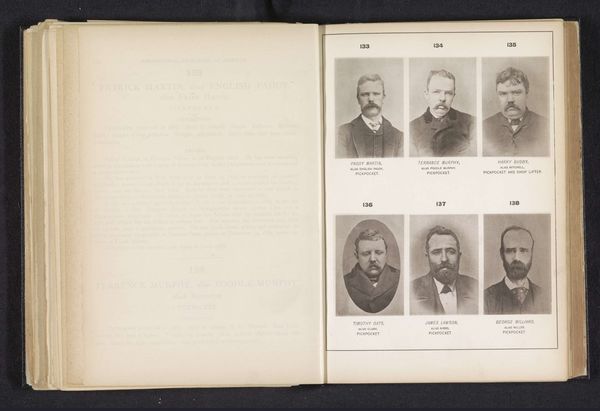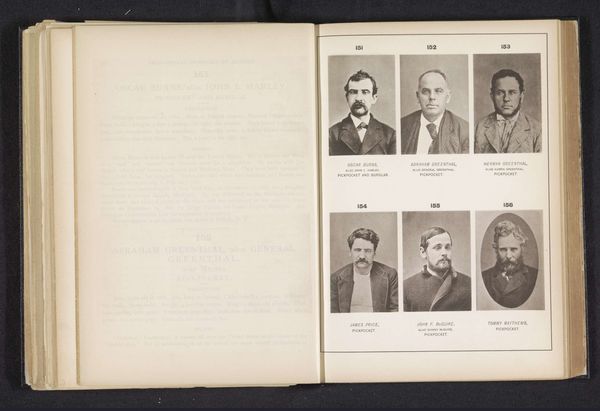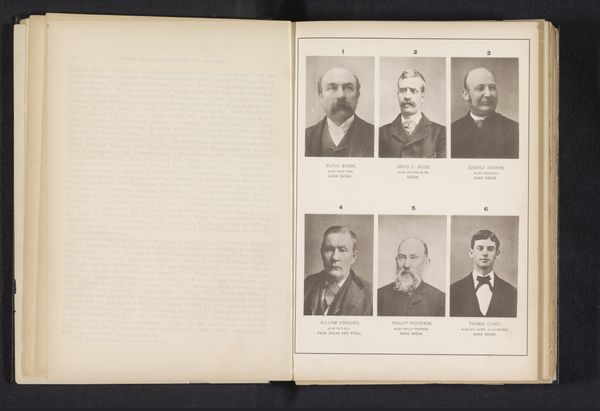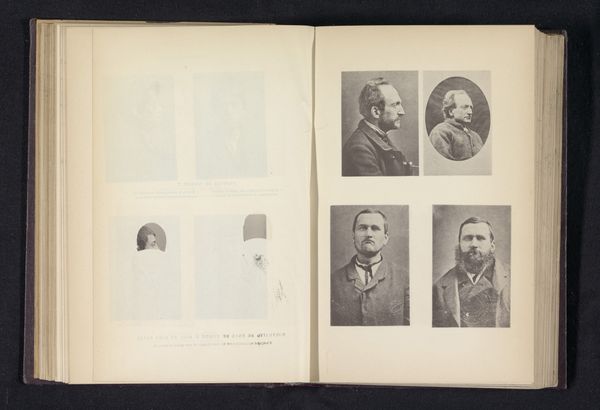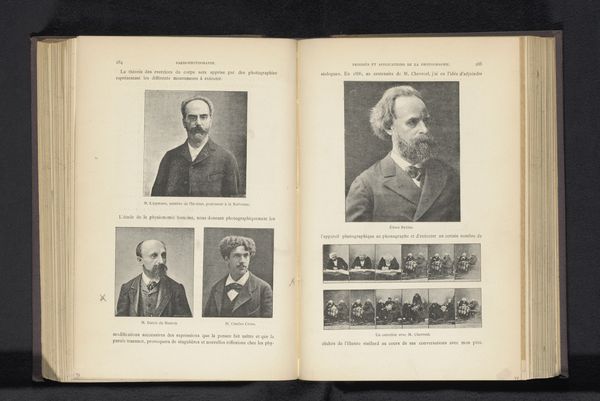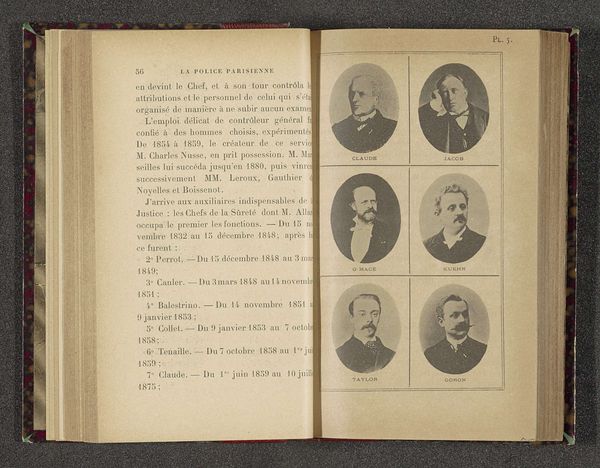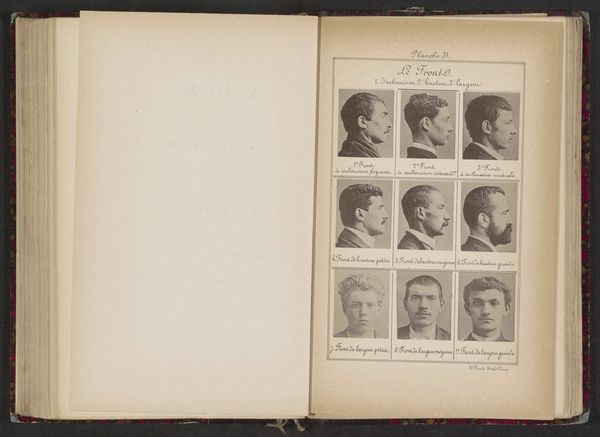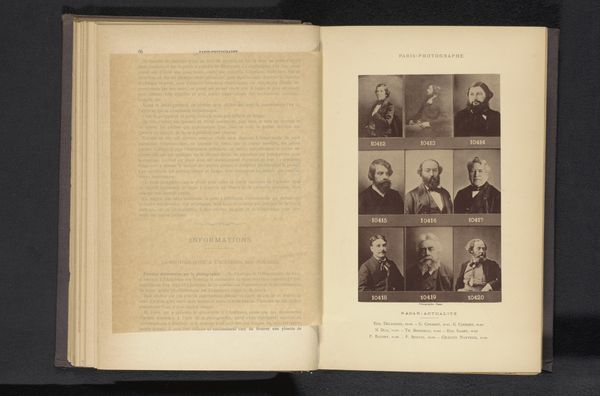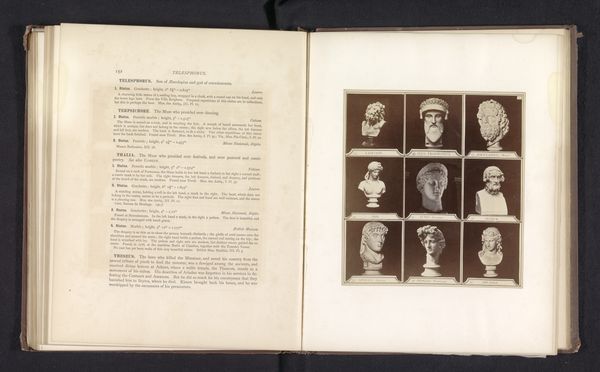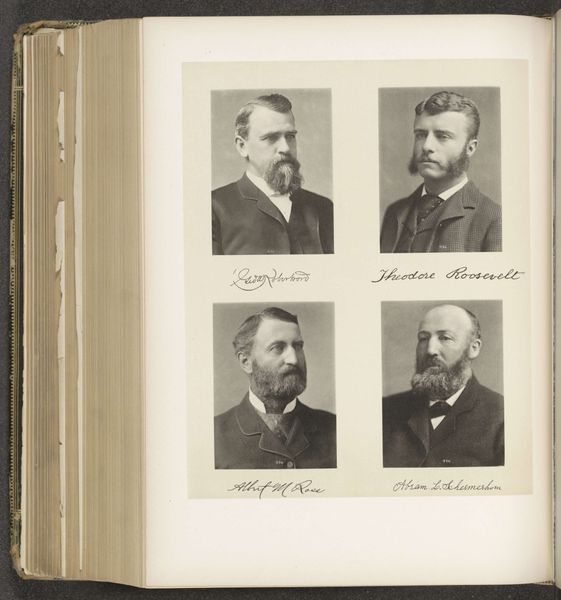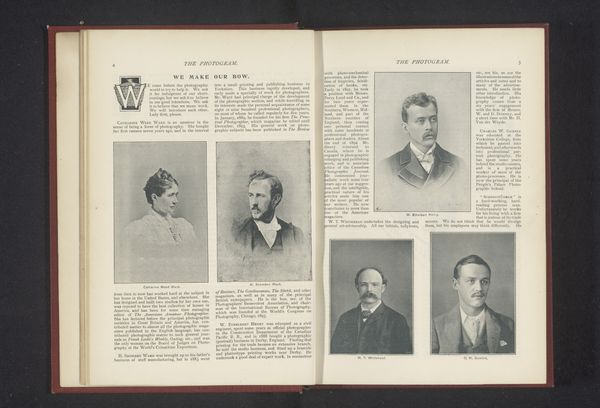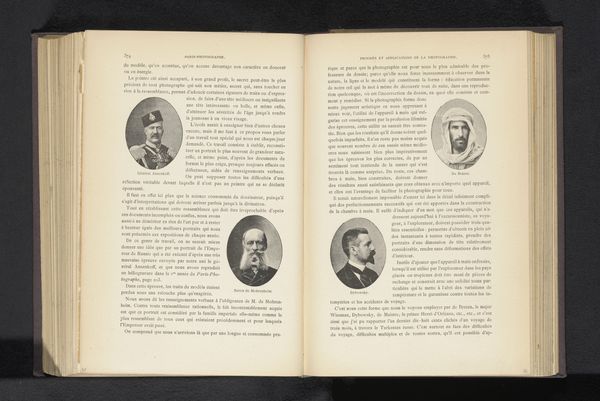
print, photography, gelatin-silver-print
#
portrait
#
script typeface
#
aged paper
#
paperlike
# print
#
photography
#
journal
#
stylized text
#
gelatin-silver-print
#
thick font
#
handwritten font
#
classical type
#
historical font
#
columned text
Dimensions: height 282 mm, width 196 mm
Copyright: Rijks Museum: Open Domain
Curator: Here we have a gelatin-silver print entitled "Zes portretten van oplichters en inbrekers," or "Six Portraits of Swindlers and Burglars," dating to before 1886. Editor: The stark, repetitive composition immediately strikes me. It's almost scientific, but the slightly yellowed paper and the individual quirks of each portrait give it a surprisingly intimate, and somewhat unsettling, feel. Curator: Indeed. Observe the precise arrangement of these portraits within the frame, creating a grid-like structure, divided equally by these visual articulations. Semiotically, these function less as individualized portrayals, and more as typological representations. Editor: Looking closely at the materials, you can really sense the process. It seems as if each individual gelatin-silver print has been pasted or adhered onto the book's surface and accompanied by individualized printed descriptions which identify both the subject and their crime. I'm really intrigued by how the printmaking transforms photographic portraits into a catalog, almost dehumanizing the subjects in a chillingly bureaucratic way. Curator: Exactly! The use of photography as a method of classification aligns with late 19th-century pseudo-sciences like phrenology, attempting to codify criminal behaviour through physiognomy. Notice how each subject, though presented uniformly, retains distinct visual markers and even distinct types, implying intrinsic predispositions. Editor: And what about the hands that would have handled the gelatin, prepared the chemicals, and printed and compiled this book? Each page turn is a tangible interaction with the physical means of both producing knowledge and asserting control over the "criminal" underclass, highlighting this visual and societal ordering, Curator: Very perceptive! It moves beyond a mere collection of portraits. It's a reflection on the societal impulse to categorize and contain perceived threats and understand the gaze of both judgment and observation at that period of history. Editor: It certainly gives one a lot to think about regarding the intersections between art, crime, labor and historical perceptions. Curator: Absolutely. An engagement of this sort really amplifies this work.
Comments
No comments
Be the first to comment and join the conversation on the ultimate creative platform.
